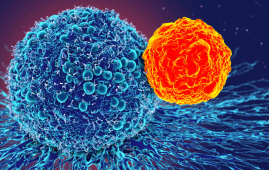

A study published in Nature Microbiology by researchers at Denmark’s University of Copenhagen delves into the microbiota of patients with anorexia nervosa (AN) pathology and identifies the mechanistic interplay between restricted eating habits and how the gut microbiota’s natural response negatively exacerbates the pathology. Furthermore, transplanting fecal microbiota from AN cases to germ-free mice under an energy-restricted diet mimicked AN eating patterns.
The researchers’ findings have been summarized in a News & Views essay published in the same publication.
Anorexia Nervosa has been strongly connected to a variety of social and environmental factors, and altered gut microbiota in persons with AN have been observed using amplicon sequencing in very small cohorts. In the current study, “The gut microbiota contributes to the pathogenesis of anorexia nervosa in humans and mice,” shotgun metagenomics was performed on fecal samples, and metabolomics was conducted with blood samples from a cohort of 77 women with AN and 70 women in healthy control.
Women with AN were substantially slimmer, with lower fasting serum glucose and insulin concentrations, greater insulin sensitivity, and lower blood serum C-reactive protein. Altered serum metabolite chemicals were discovered, which could imply that the compounds are altering brain regulation of hunger, emotions, and behavior via blood circulation. Alternatively, the metabolites may be activating gut-microbiota-brain neuronal signaling pathways.
There was no significant difference in total bacterial cell counts between AN and the healthy control when stool samples were compared. While cell numbers and diversity were comparable, there were significant variations between enriched and reduced bacterial taxa. Roseburia intestinalis and Roseburia inulinivorans, which have a high ability for digesting plant polysaccharides and are considered part of a healthy ecosystem, were among the reduced species in AN.
Bacterial functional modules that produce metabolite chemicals involved with neurotransmitter breakdown were shown to be abundant in AN, and numerous structural variants in bacteria were linked to AN metabolic characteristics.
The gut virome was similarly altered in the AN group, with fewer viral-bacterial interactions observed. Whereas healthy gut viruses normally lower the populations of some bacteria, the diminished interactions allowed some bacterial species to proliferate.
Fecal transplants were given to mice on a low-energy diet. Those that got AN transplants lost even more weight at first and then took longer to restore weight than mice transplanted with healthy control group feces.
The AN stool mice showed increased levels of appetite suppressor genes in the hypothalamus region of the brain, as well as thermogenesis-related genes in adipose tissue implicated in energy control.
In a non-pathology environment, bacterial metabolites that mediate some of the consequences of hunger could be a good biological strategy, allowing energy to be focused on seeking the next meal. In the instance of anorexia, the survival strategy coincides with an illness that uses the mediated space to advance the pathological behavior.
more recommended stories
 T-bet and the Genetic Control of Memory B Cell Differentiation
T-bet and the Genetic Control of Memory B Cell DifferentiationIn a major advancement in immunology,.
 Ultra-Processed Foods May Harm Brain Health in Children
Ultra-Processed Foods May Harm Brain Health in ChildrenUltra-Processed Foods Linked to Cognitive and.
 Parkinson’s Disease Care Advances with Weekly Injectable
Parkinson’s Disease Care Advances with Weekly InjectableA new weekly injectable formulation of.
 Brain’s Biological Age Emerges as Key Health Risk Indicator
Brain’s Biological Age Emerges as Key Health Risk IndicatorClinical Significance of Brain Age in.
 Children’s Health in the United States is Declining!
Children’s Health in the United States is Declining!Summary: A comprehensive analysis of U.S..
 Autoimmune Disorders: ADA2 as a Therapeutic Target
Autoimmune Disorders: ADA2 as a Therapeutic TargetAdenosine deaminase 2 (ADA2) has emerged.
 Is Prediabetes Reversible through Exercise?
Is Prediabetes Reversible through Exercise?150 Minutes of Weekly Exercise May.
 New Blood Cancer Model Unveils Drug Resistance
New Blood Cancer Model Unveils Drug ResistanceNew Lab Model Reveals Gene Mutation.
 Healthy Habits Slash Diverticulitis Risk in Half: Clinical Insights
Healthy Habits Slash Diverticulitis Risk in Half: Clinical InsightsHealthy Habits Slash Diverticulitis Risk in.
 Caffeine and SIDS: A New Prevention Theory
Caffeine and SIDS: A New Prevention TheoryFor the first time in decades,.

Leave a Comment